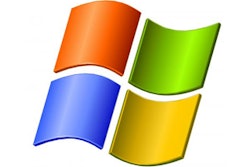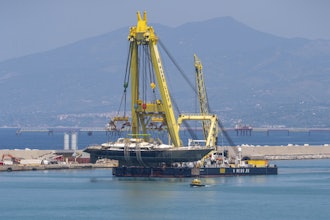Enterprise Resource Planning (ERP) software is an essential part of a manufacturing company’s operational strategy. ERP provides the information backbone that companies rely on for managing internal resources (inventory control, production scheduling), planning and managing the business, and interconnecting with customers and trading partners in the supply chain.
ERP software has been widely available throughout the world for many years, and is continually growing in capability while incorporating new technologies and modern management theories and practices. Given all of the above, it is perhaps surprising that many companies are operating with ERP software that is 10, 15 or even 20 or more years old. Some of these companies have kept up with the continuing stream of updates and enhancements provided by the software developers (at an annual fee, of course), but others are truly using software that is just as it was released in the 1990s, or 1980s.
At the same time, there are companies that have replaced or are replacing ERP systems that are only a few years old. Why is there such a disparity in ERP system longevity and replacement cycles? There are a number of reasons why a company might stay with an incumbent ERP system and just as many reasons why a company would replace their system. Some of these reasons are perfectly valid and others not so much.
Reasons for keeping an ERP system
The most compelling reasons for keeping an existing ERP system in place, regardless of its age, are mostly what the system is NOT doing. It’s perfectly reasonable to keep your existing system if:
- Lack of functionality or flexibility is not limiting your company’s growth or agility. This includes the ability to access information through flexible report writers and inquiry tools, e.g. SQL.
- The system is reliable – not breaking down or otherwise becoming unavailable due to either hardware or software failure. Adequate response time falls into this category, as well.
- Still affordable – maintenance cost has not increased to the point of being unbearable due to discontinued equipment or unsupported software.
The first of these is the most critical for company operations and competitiveness but the most difficult to recognize. Outright failures and high costs are obvious problems that often lead to an immediate replacement effort.
Absent one of these obvious triggers, the attitude is usually “if it’s not broken, don’t fix it,” especially when considering the high cost and the serious disruption of an ERP implementation project.
Inertia sets in, along with fear of the unknown and lack of budget for a big IT project, and the years go by. Often, the company will create patches and work-arounds to keep the system functional. They might implement point solutions for advanced planning, e-commerce, CRM or other specific needs and invest in custom integration to their aging ERP backbone. That makes a decision to change systems even more daunting.
Quite frankly, one of the strongest reasons for staying with the existing system is the expectation that a system replacement project is both expensive and disruptive. There’s no question that a new system implementation is disruptive and there will be costs. But you can’t ignore the benefits (return on investment) potential, nor should you downplay the harm to your business from being unable to lead your industry or perhaps even keep up with competitors because of shortcomings in your current system.
Reasons and rationalizations for changing ERP
The obvious reasons for replacing your ERP system are embedded in the bullet list above:
- Lack of functionality or flexibility is limiting the company’s growth or agility.
- Slow response time and difficulty in accessing information.
- Hardware becomes unreliable and support limited and increasingly expensive as the equipment is discontinued or the supplier is acquired or goes out of business.
- Software becomes increasingly expensive to maintain for the same reasons.
- Falling behind on market technology advances and industry sector standards.
User frustration and complaints, and the business difficulties that are a direct result of system shortcomings, will quickly place an impetus behind a replacement project.
Sometimes, however, a company is just unhappy with their current system. Often, this is because the system was never completely and successfully implemented and therefore has never gained the confidence of company management or become a valued resource.
When this is the case, the team that was responsible for choosing and implementing the system might feel defensive and resist any attempts to replace the system until there is a management change. The new regime, not feeling any responsibility for past decisions, has the opportunity to start over with a different system. Whether a new system is the best answer is debatable. If the new system is implemented with the same poor planning, project management, and lack of commitment as the incumbent system, the results are likely to be the same – disappointment and dissatisfaction. What’s really needed in this situation is a clean start or re-start, whether it’s with new software or with the same software, but with proper commitment and implementation support.
The most urgent reason for changing systems is that the current system is inhibiting the business in some way. Customers are demanding on-line functionality that the system can’t provide e.g.: There is a need to collaborate with suppliers and distributors that is beyond what the system can support. New techniques or strategies would help the business thrive, but the system does include the necessary capabilities, and many other similar issues.
The ERP Market
If you haven’t shopped for ERP lately, you may be surprised at what you find in the market. While the two “big” players dominate the headlines and together account for a substantial share of the market, there is a healthy and vibrant market outside of the so-called Tier 1 offerings. Most of these Tier 2 and Tier 3 products offer industrial-strength capabilities in a package that is more affordable, more flexible and user-friendly, and easier and quicker to implement. And each one is constantly being updated and enhanced to take advantage of new technologies and evolving management approaches and tools. The latest developments include cloud-based options, mobile access and the growing incorporation of social functions/social media.
There has been a steady consolidation among vendors over the last decade, with many of the old, familiar names in the market disappearing as they merge or are acquired, sometimes more than once. The good news is that the acquiring partner, in most cases, continues support for the acquired system and offers a logical migration path to its other offerings and follow-on products for those that want to move.
The best ERP system for your company is the one that offers the functionality you need, appropriate for your industry, and is supported by the developer and its partners with people who understand your industry and are dedicated to your success. ERP is more than a simple software purchase – it’s a whole ecosystem of developers, implementation consultants, business analysts, support representatives, and the community of users and service partners that become available when you choose a solution.
Recommendations
Doing nothing is a choice
A decision to stay with your existing system is as much a choice as deciding to change to a new system. And it is a decision that has to be made over and over. Your company’s needs change. ERP product capabilities and pricing are also subject to change. So both sides of the cost/benefit equation will change over time. If a system change is not justified today, that says nothing about whether it will be justified in six months or a year or two years.
Time value of system investments
If a new system can provide a return on your investment (and why would you consider doing it if there was no return), delay will only lessen the return. If the justification plan denotes a net savings of $100,000 per year and you postpone the project for six months, you have turned away $50,000 in benefits.
ROI is not just lower costs
Most companies, when looking at the return on a system investment, will focus on cost savings. They are often the easiest benefits to identify and they can drop right to the bottom line. Cost savings may even be more than sufficient to justify the entire investment. In most cases, however, the greater return is on the top line. Improved performance from using the new system’s capabilities can result in improved customer service (shorter lead time, dramatically improved on-time shipment, higher quality, more aggressive pricing while preserving margins – a byproduct of reduced cost) and lead to increased sales. Additional positive effects are improved employee satisfaction and retention, increased agility, better supplier relationships and performance, and more.
Choose wisely
ERP is more than a one-time software purchase – it will become the information backbone for your company and a vital part of operations and your company’s success. Choose a partner (developers / their business partners / support organizations) that understands your industry and your business needs and challenges. The best strategy, once you’ve made a decision, is to stay up-to-date with all system enhancements and updates so your system will continue to provide the capabilities you need to deal with changing markets, evolving management tools, and technological innovations.
About the Author: Dave Turbide
Dave Turbide is a certified manufacturing engineer and is certified by APICS as a Supply Chain Professional, at the fellow level in Production and Inventory Management and in Integrated Resource Management. Dave is the current President of the Granite State Chapter of APICS and Vice President for education. He has authored Computers in Manufacturing, MRP+, and Why Systems Fail, among others. Dave has published hundreds of articles in various trade publications. He is also the editor for Advanced Manufacturing Today, a free new service from Advanced Manufacturing Software by I.B.I.S. Inc.






















